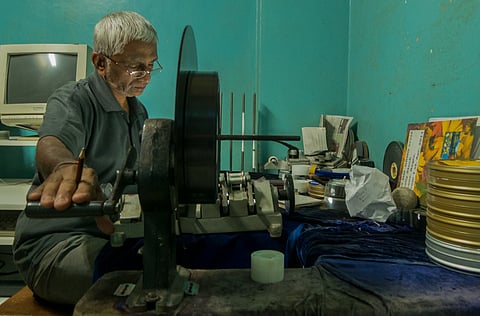Image-making on celluloid is a dying medium, cut short by the advent of digital technology. Purists still swear by it, but almost all major companies involved in the business of image-making have moved on to digital. No one knows how long we can continue to photograph or film on celluloid. Some hope it will return, while others say that it will be phased out completely.
A whole generation of photographers started photographing on analogue cameras before being compelled to switch to digital. As the years have passed, it has become more difficult to buy celluloid film and to process it. Professionals, amateurs and hobbyists alike talk of how exciting it was to wait for a film to be 'processed' at a laboratory, to see it after days, making the event of viewing the final images all the more exciting. Nostalgia, however, does not necessarily translate into choosing the medium that gave us beautiful, timeless images.

